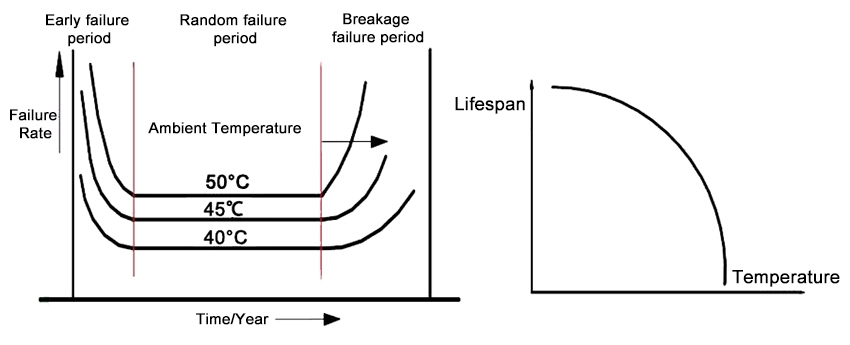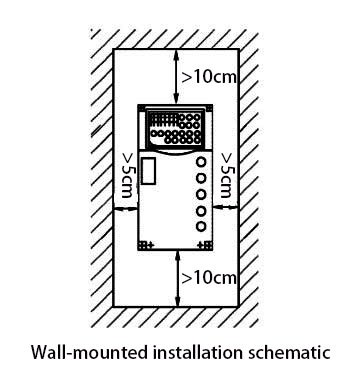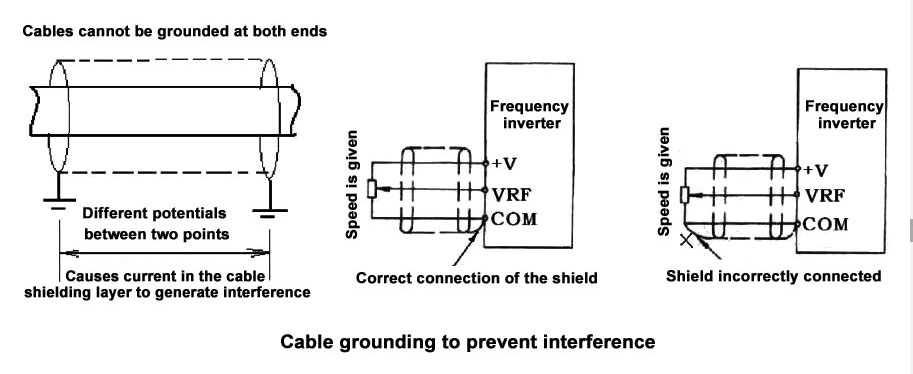A frequency inverter is an electronic device that is mainly used to change the operating frequency of an AC motor, thereby adjusting the speed of the motor. By adjusting the output frequency, precise speed and torque control can be realized, enabling the motor to operate efficiently under different working conditions. Frequency inverter is widely used in the industrial control field of equipment, frequency inverter can adjust the speed of the motor to achieve precise motion control. Inveter.com will introduce the use of frequency inverter and debugging steps in detail to help users better understand and apply this key equipment.
Problems to be Paid Attention to in the Use of Frequency Inverter
In the use of frequency inverter, due to improper selection and use, often causes the frequency inverter can not run normally, or even cause equipment failure, so should pay attention to the following points.
Installation and Wiring of Frequency Inverter
- Preparation for installation: Before installing the frequency inverter, first of all, you need to carefully read the instruction manual of the frequency inverter, and prepare the work according to the manufacturer's requirements. Make sure that the environment around the equipment is well-ventilated and the temperature is moderate.
- Power Connection: Connecting the power supply is the first step in using the frequency inverter, make sure that the power supply meets the rated voltage and frequency requirements of the frequency inverter. Correctly connecting the power supply can ensure the normal operation of the frequency inverter.
- Motor Connection: connect the motor with the frequency inverter for the correct wiring, pay attention to check whether the wiring is firm, to prevent loose or short circuits. Correct motor wiring is the key to ensuring stable operation of the system.
- Installation Environment: Due to the high degree of integration of the frequency inverter, the overall structure is compact, and its heat dissipation is large, so the temperature, humidity, and dust content of the installation environment are high. Mainly divided into physical and electrical environments. The frequency inverter is a high-power electronic component, very susceptible to the impact of the operating temperature, the general requirements of the product are 0~55 ℃, with the best control below 40℃. When the temperature is too high and the temperature change is large, the internal frequency inverter is easily to condensation phenomenon, its insulation performance will be greatly reduced, and may even lead to short-circuit accidents.

Frequency inverter in the work due to rectification and frequency inverter, around the generation of a lot of interference electromagnetic waves, these high-frequency electromagnetic waves on the nearby meters, instruments have a certain degree of interference. Avoid installation in dust, high humidity, high temperature, corrosive liquids, corrosive gases, strong interference sources around, and vibration occasions. Weather or humid working environments will have frequency inverters because dust and humidity lead to circuit board fire and damage, damage is mostly to module and switching power supply.
Frequency inverter power input is often over-voltage protection, but if the input side of the high voltage role for a long time, will make the frequency inverter input damaged. Therefore, in practice, verify the input voltage of the frequency inverter, single-phase or three-phase, and the frequency inverter using the rated voltage. Especially when the power supply voltage is extremely unstable, there should be voltage stabilizing equipment.
Parameter Setting of Frequency Inverter
- Parameter Setting: The setting parameters of the frequency inverter are set by the controlled equipment type and process requirements, each parameter has a certain selection range, and improper settings, resulting in the phenomenon that the frequency inverter can not work properly.
- Basic Parameter Setting: Before starting the frequency inverter, you need to set some basic parameters, including the motor's rated power, rated voltage, rated current, and so on. These parameter settings directly affect the output performance of the frequency inverter, so you need to carefully check and adjust.
- Advanced Parameter Settings: The settings of some advanced parameters will affect the performance and stability of the frequency inverter, such as over-current protection, over-voltage protection, under-voltage protection, and so on. According to the specific application scenarios, adjusting these parameters can better adapt to different working conditions.
Debugging Steps of Frequency Inverter
- Confirm the Hardware Connection: Before starting the frequency inverter, confirm whether all hardware connections are correct, including the power connection, motor wiring, etc. Make sure there are no wiring errors and short-circuit phenomena.
- Start the Frequency Inverter: Start the frequency inverter according to the requirements of the instruction manual, and pay attention to monitoring whether there are any abnormalities during the startup process. During the start-up phase, you can gradually increase the output frequency and observe the running status of the motor.
- Soft start and Speed Regulation: Carry out soft start and gradually adjust the output frequency and voltage of the frequency inverter to ensure the smooth start and operation of the motor. Adjust the output frequency according to the actual need and observe the speed change of the motor.
- Checking the Running Parameters: During the running of the motor, pay attention to the monitoring of various running parameters, including current, voltage, speed, and so on. According to the changes in these parameters, you can judge whether the running status of the motor is normal or not and whether you need to further adjust the parameters.
Selection.
The correct selection of frequency inverter is very critical to the normal operation of the control system. The selection of a frequency inverter must fully understand the characteristics of the load driven by the frequency inverter. People in practice often produce machinery divided into four types, constant torque load, constant power load, fans (pumps), and inertia load. The series of frequency inverters used in different environments and sites are not the same, for some special applications, such as high ambient temperature, high switching frequency, high altitude, etc., which will cause the inverter capacity reduced, the inverter needs to be enlarged by one grade to choose.
Maintenance
During the operation of frequency inverter, you can visually check the running condition from the outside of the equipment for any abnormality, and the full-time inspector can check the running parameters of frequency inverter through the keyboard panel conversion key, such as output voltage, output current, output torque, motor speed, etc., to master the range of daily running value of frequency inverter, to find out the problems of frequency inverter and motor in time.
- Set up a person to regularly clean the frequency inverter, blowing dust, to keep the internal cleanliness of the frequency inverter and air ducts.
- Keep the environment around the frequency inverter clean and dry.
- After each maintenance of the frequency inverter, carefully check whether there are any missing screws and wires, etc., to prevent small metal objects caused by short-circuit accidents of the frequency inverter.
- Measure the frequency inverter (including motor) insulation.

Precautions
- Connecting the power supply to the output terminals of the frequency inverter will damage the frequency inverter. Please check the wiring error and program before powering on.
- When installing a contactor on the inlet side, do not open and close the contactor frequently, as this may cause malfunction of the inverter.
- Even after the power to the frequency inverter is turned off, there is still some un-discharged electricity inside. When checking, wait until the operator and indicator lamps go out.
- On the power supply side of the frequency inverter, install a circuit breaker for wiring to protect the primary wiring. The selection of the circuit breaker depends on the power factor of the power supply side (which varies with the power supply voltage, output frequency, and load). Its action characteristics vary with high-frequency current, and it is necessary to select a large-capacity one.
- The frequency inverter can be used without an incoming contactor. The incoming contactor can be used for stopping operation, but then the braking function of the frequency inverter will not be available.
- If a contactor is set between the good quality frequency inverter and the motor, switching during operation is prohibited in principle. When the frequency inverter is connected during operation, there is a large inrush current, so the inverter overcurrent protection operates. When a contractor is set up for switching with the power grid, be sure to switch after the inverter stops output and use the speed search function appropriately.
However, although frequency inverter brings great convenience and benefits, it is still necessary to pay attention to the stability of the system, maintenance, and the impact on the environment in the application process. In the future, with the continuous progress of science and technology, we can expect the frequency inverter technology to show its strong potential in more fields and bring more innovation and change to industrial production. In summary, the frequency inverter as the mainstay of modern industry, will continue to lead the direction of industrial automation, to create a more intelligent and efficient production environment for mankind.
